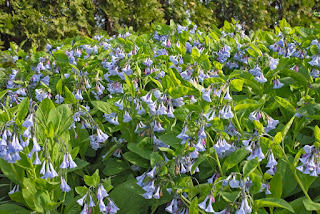Making “The Quintet” Altered Reality
The Quintet
I took a photograph of my collection of wooden bird
sculptures with the idea of creating a new acrylic painting. When I cut the
figures out and placed them in a 20 x 16 canvas, I changed my mind and decided
to go nuts!
The first thing I did was to create the 20 x 16 canvas then
crop the image to fit nicely onto the canvas then make a duplicate layer. I cut out the birds using Topaz Remask with
the result replacing the duplicate layer.
I deleted the original layer then moved the duplicate layer to the upper
half of the canvas.
The birds are standing in water so a copy of Layer 1 is renamed
Layer 2, rotated 180 deg., then flipped horizontally. The layer is then moved down to line up with
the legs in Layer 1. Finally, Layer 2
brightness is reduced.
Layer 1 is selected and the magic wand outlines the
birds. A background image is loaded
copied then special pasted into creating Layer 3 with Blend Mode set to Overlay. The sky brightness and contrast is adjusted
so that the birds stand out. Layer 3 is
moved above the locked background layer which has been disabled.
Layer 2 is copied and renamed Layer 4. The birds are isolated with the magic wand
tool. Edit-Fill-Color is selected with a
dark blue.
Duplicate layer 3 and rename to Layer 5. Flip Layer 5 180 deg., then move it over the
refection. Set the blend mode to Lighten
and reduce the opacity by about 60%.
We need a brick wall to separate the water from the
sky. I chose a photo of a stone wall
and copied a section out with a narrow sized rectangle marquee tool, then
pasted it onto Layer 3 positioning it to be above the line between sky and
water. This layer is renamed Layer 7.
The water has a nice reflection but it needs to be contrasted
with an opposite color. I chose an image
of a flowing river and cut out a section with the rectangle marquee tool and
pasted it over Layer 5. I changed the
blend mode to hue and opacity to about 66%. The layer is renamed Layer 6 That completes
“The Quintet”. See first image.
Layer order in Photoshop
I shoot walls, tree trunks, gates, lamps, clouds, cloth, etc.
and keep them in a folder “My Textures” with subfolders to identify each
group. When the time comes I have an
image to use to make something for “Altered Reality”.





















